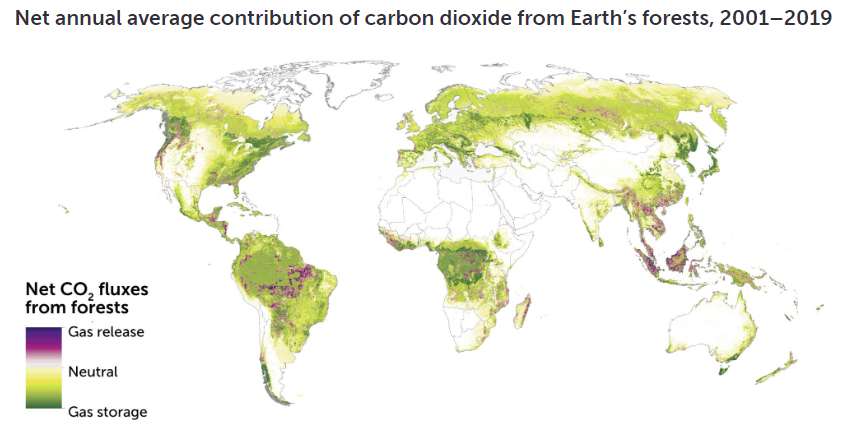Ambitious, high-level commitments for forest restoration and tree planting have been made as a result of the increasing focus on nature-based solutions (NbS) to address the climate crisis. The Bonn Challenge[1] aims to restore 350 million hectares of deforested land by 2030, with countries pledging more than 10% of their land area to forest restoration.
Despite the efforts to significantly scale up restoration activities, the evidence for the success of forest restoration is inconsistent.
Forest restoration in developing nations could provide a “triple win,” by lowering biodiversity losses, boosting sustainable development, and supporting local and global efforts to mitigate and adapt to climatic change. Despite the efforts to significantly scale up restoration activities, the evidence for the success of forest restoration is inconsistent.
Reforestation projects are becoming more and more common for carbon offsetting. However, experts are urging caution as the drive to plant more trees grows around the world. They claim that such large-scale tree projects must first tackle a number of scientific, political, social, and economic issues before moving forward.
There is too much emphasis on trees and inadequate exploration of other ecosystems that store carbon.
According to the many research[2] [3] [4], poorly planned programmes that ignore these issues risk wasting funds, political support, and public goodwill in addition to doing more harm than good. Instead of managing, protecting, and monitoring how the planted trees perform over prolonged times, there has been an overemphasis on numbers of trees planted as a benchmark for the effectiveness of forest restoration and collaborating with local people. There is too much emphasis on trees and inadequate exploration of other ecosystems that store carbon.
The South-East Asian Forest Restoration Scenario & Possible Mitigation
An analysis of tree survival and growth data from 176 restoration sites in South and South-East Asia for a study published in Philosophical Transactions of the Royal Society B[5], a biweekly peer-reviewed scientific journal, revealed that roughly half of trees planted in tropical and subtropical forest restoration efforts do not survive more than five years. The authors highlighted that there is a significant variation in survival rate observed between sites and this could be a result of a variety of factors, such as planting densities, species selection, environmental conditions, extreme weather events, local socio-economics or management practices.

Tree planting have highly variable outcomes, but it is also a relatively expensive option of restoration. As a result, we need to better understand “permanence drivers” and evaluate the costs and benefits of various restoration interventions across various landscapes. This uncertainty regarding planting outcomes highlights the importance of conserving the remaining forests that are still functional.
Taller saplings are typically better able to withstand environmental challenges or take advantage of opportunities for rapid growth, but they are also more expensive to grow.
The success of restoration depends on the selected species and the baseline conditions at the site. The tree sapling height at planting and survival in the open degraded areas has a positive correlation and the trade-off between cost and benefit must be carefully considered. Taller saplings are typically better able to withstand environmental challenges or take advantage of opportunities for rapid growth, but they are also more expensive to grow.
A more thorough comprehension of the variables influencing restoration effectiveness will result from improved quantitative data collection on baseline environmental and vegetation conditions and regular monitoring and this requires valuing, involving and strengthening local knowledge.
Species-specific environmental responses and the suitability of chosen species for the planting site may trigger mortality.
Various studies highlight that a minimum of 625 different tree species were deployed in restoration plantings throughout Asia, although only a small portion of the native species pool was used as seen by the low average species richness at any given site. Species-specific environmental responses and the suitability of chosen species for the planting site may trigger mortality. As in most cases, the planting species richness was usually low, which could have an impact on future forest function.
Both financial and institutional support are needed for the long-term monitoring and reporting of status of the planted forests.
It is important to identify and address barriers that prevent planting greater diversity. Typically, ecological and social factors are considered separately, while in fact, restoration outcomes require an integrated approach of the socioecological setting promoting ownership of restoration projects by the communities. Although only few locations have been studied up to this time, synthesis revealed that average seedling mortality increased by about 30% between 5–10 years after planting. This also signifies that both financial and institutional support are needed for the long-term monitoring and reporting of status of the planted forests.
Author

Views expressed in this article are those of the author and do not necessarily reflect those of the editors or publishers.
References:-
[1] https://www.bonnchallenge.org/about
[2] Heilmayr, R., et al., Impacts of Chilean forest subsidies on forest cover, carbon and biodiversity. Nat Sustain 3, 701–709 (2020).
[3] Rana, P., et al., Predicting wasteful spending in tree planting programs in Indian Himalaya. World Development, 154, 105864 (2022).
[4] Brudvig LA, & Catano CP. Prediction and uncertainty in restoration science. Restoration Ecology, 13380 (2021).
[5] Banin Lindsay, et al., The road to recovery: a synthesis of outcomes from ecosystem restoration in tropical and sub-tropical Asian forests, Philosophical Transactions of the Royal Society B, (2022)


